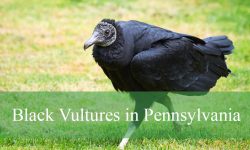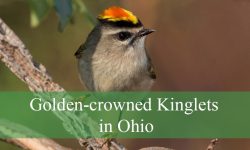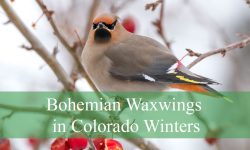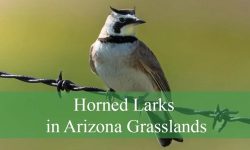Northern harriers glide low over Kansas grasslands with an elegance that sets them apart from every other bird of prey in the region. Their long wings, white rump patch, and owl-like face give them a distinctive appearance, but what truly defines them is the style of their flight—slow, buoyant, almost ghostlike as they drift just above the prairie in search of prey.
Kansas offers some of the best habitats for northern harriers in the central United States. Open grasslands, marshes, and wide agricultural fields create endless hunting corridors where harriers skim across the landscape with surprising agility. Although many residents see them from a distance, few truly understand how specialized, secretive, and behaviorally unique these raptors are.
This article dives into the hidden truths of northern harriers in Kansas, exploring their behavior, winter adaptations, breeding strategies, prey selection, and ecological importance across the prairie ecosystem.
Understanding Northern Harriers in Kansas

What Northern Harriers Really Are
Northern harriers are medium-sized raptors with long wings, slim bodies, and a flight style unmatched by other hawks. Their most famous trait is the prominent white rump patch visible during flight. Up close, the owl-like facial disk becomes apparent—a circular arrangement of feathers that helps funnel sound toward their ears. This adaptation allows them to hunt visually and acoustically, giving them an advantage over prey hiding in dense grass.
Harriers are also sexually dimorphic. Males appear pale gray and are often called “gray ghosts” due to their subtle coloration and silent, drifting movement. Females and juveniles are larger, brown, and heavily streaked, giving them excellent camouflage among the grasses of Kansas. Regardless of age or sex, all harriers share nimble wingbeats, low hunting flights, and keen perception of movement on the ground.
Their flexibility makes them successful across Kansas throughout the year. Some individuals migrate through in spring and fall, while others remain through winter, taking advantage of Kansas’ vast open spaces.
Why Kansas Supports Strong Harrier Populations
Kansas is nearly perfect for northern harriers because their survival depends on open, unobstructed landscapes. The state’s prairies, Conservation Reserve Program (CRP) lands, marshes, and agricultural fields allow harriers to travel long distances just a few feet above the ground, detecting mice, voles, and small birds with impressive efficiency.
The climate also works in their favor. Winters can be cold but are usually dry and open, preventing snow cover from burying prey for long. Harriers can still detect movement and sound beneath thin snow layers, giving them better hunting opportunities than raptors dependent solely on vision.
Prairie wetlands and marsh edges are especially critical. These zones hold high concentrations of small mammals year-round. Many harriers that breed in northern regions overwinter in Kansas specifically because the state’s wetlands continue producing prey even during cold months.
Where They Occur Across the State
Northern harriers move through Kansas with remarkable fluidity, appearing wherever the land opens into broad views and sweeping grassland horizons. They do not confine themselves to a single region. Instead, they drift across the state’s prairies, wetlands, and agricultural corridors with seasonal shifts that mirror prey abundance and changing weather.
The tallgrass prairies of the Flint Hills host some of the strongest breeding populations. These rolling, windswept expanses provide the dense vegetation harriers need for ground nests and the wide visibility required for hunting. Their low, buoyant flight blends seamlessly with the gentle rise and fall of the prairie slopes, making the Flint Hills a year-round hotspot.
Central Kansas offers massive stretches of mixed-grass prairie where harriers glide between pasture edges and unplowed fields. These areas support especially high numbers of voles and mice, drawing wintering harriers from northern states. The combination of varied grass height, wet depressions, and long uninterrupted sightlines creates ideal conditions for their unique hunting style.
Western Kansas opens into shortgrass plains—vast, uncluttered landscapes that allow harriers to see movement from remarkable distances. Although prey can be sparse during drought years, harriers compensate by covering larger territories and relying on their aerial agility to locate rodents scattered across open ground.
Wetland systems are equally important. Cheyenne Bottoms Wildlife Area hosts one of the most concentrated winter harrier populations in the entire Great Plains. The surrounding marshes, moist fields, and flooded basins attract rodents, blackbirds, and shorebirds, providing food throughout cold months. Quivira National Wildlife Refuge serves a similar role, offering habitat stability when nearby prairies dry or freeze.
Agricultural zones also support large wintering groups. Fields with stubble, CRP grasslands, and unmanaged fencerows harbor hidden populations of mice and voles. Harriers often patrol these landscapes at dawn and dusk, gliding along field edges as shadows lengthen across the soil.
Their distribution across Kansas changes throughout the year. Winter concentrates them in rodent-rich wetlands and grasslands. Spring migration sends brief waves of birds moving northward. Summer narrows their range to secluded nesting regions with tall grass. By autumn, dispersal spreads them across the state again as they feed heavily before winter.
Hidden Behaviors Most People Never Notice
Their Low, Silent Flight Is a Precision Weapon
Northern harriers are built for stealth. Unlike hawks that soar high above the landscape, harriers skim just inches above the grass, weaving gently as if carried by the wind. Their wings tilt and adjust constantly, allowing them to ride invisible air currents without expending unnecessary energy. This quiet, floating motion is a hunting strategy refined over millions of years.
Their owl-like facial disk enhances hearing, allowing them to detect rustling beneath deep grass—something few raptors can achieve. This dual reliance on sight and sound lets them pinpoint prey even when it is completely hidden from view. A vole shifting under the stems of bluestem grass or beneath thin snow becomes instantly detectable.
This multi-sensory hunting method gives harriers a powerful advantage in Kansas, where prey hides within dense prairie vegetation rather than sitting exposed.
Their Courtship Flights Are Spectacular
During spring, male harriers perform some of the most dramatic aerial displays of any prairie raptor. These sky dances begin with steep climbs, followed by sudden dives that drop them toward the grass before they twist upward again in a rapid loop. The entire display appears effortless—almost acrobatic—yet it requires enormous strength and stamina.
Females observe from the ground or low perches, judging each male’s agility, endurance, and precision. These displays are essential for mate selection, revealing both physical condition and territorial dominance. Because they occur in remote grasslands with little human presence, most people never witness them.
They Use Sound More Than Most Hawks
Harriers use acoustic cues far more extensively than other hawks. When prey stays motionless in thick cover, sound becomes more reliable than sight. Their facial disk captures faint noises—a leaf shifting, grass stems bending, the tunnel-like sound of rodents moving beneath snow.
This adaptation allows harriers to continue hunting in poor visibility, including cloudy days, strong winds, or low-light conditions. It also explains why they can successfully hunt in winter when visual cues are limited.
Anatomy Built for Life on the Prairie
Long Wings and Lightweight Bodies
Northern harriers rely heavily on energy efficiency. Their long, flexible wings allow them to glide effortlessly for long distances, making wide loops across the prairie with minimal wingbeats. Their bodies are surprisingly light compared to larger hawks, reducing fatigue during extended hunts.
Even when Kansas winds sweep across the plains, harriers maintain stability through small wing adjustments—an ability that lets them remain active when other raptors seek shelter.
Facial Disk for Acoustic Hunting
The facial disk is one of the harrier’s most defining features. These feathers form a curved, bowl-shaped structure that channels sound directly toward their ears. This adaptation evolved independently in harriers and owls, giving both groups superior hearing compared to other birds of prey.
In Kansas grasslands, where prey is often concealed, this advantage is essential for survival.
Long Legs for Grabbing Prey Deep in Grass
Rodents rarely sit exposed on open ground. Harriers use long legs to reach into grass clumps, rodent tunnels, and snowy depressions. Their talons strike with surprising force, locking onto prey before it has time to escape. This anatomical design allows them to exploit prey sources inaccessible to many other raptors.
Feeding Habits Across Kansas
Diet Heavily Focused on Small Mammals
Rodents form the backbone of the harrier’s diet across Kansas. Voles are particularly important, reaching high densities in CRP fields, wetlands, and pastures. Harriers also take mice, juvenile rabbits, and ground squirrels, shifting their hunting areas as prey populations rise and fall.
Winter marshes are vital because rodents remain active beneath thick vegetation, offering reliable food during harsh weather.
Birds and Insects Supplement Their Diet
Harriers demonstrate remarkable dietary flexibility. During migration, small birds such as sparrows or blackbirds help sustain them. In late summer, when insects reach peak abundance, harriers sometimes pursue grasshoppers or beetles.
This adaptability is essential during years when rodent numbers decline.
Scavenging and Opportunistic Feeding
Although not primarily scavengers, harriers will take roadkill or frozen carcasses during severe winter weather. This opportunistic behavior allows them to conserve energy when live prey becomes scarce.
Nesting and Breeding in Kansas
Ground Nests Hidden in Vegetation
Northern harriers are one of the few hawks that nest directly on the ground. Females scrape a shallow bowl in tall grass or wetland vegetation, lining it with twigs and dry stems. These nests blend so well into the landscape that they are nearly impossible to detect unless a harrier flushes from the site.
Ground nesting is risky, but Kansas’ tall spring vegetation offers enough cover to protect eggs and chicks from predators.
Multiple Males May Mate With One Female
Harriers are capable of polygyny—a rare trait among raptors. A strong male may support more than one nest if prey is abundant. During rodent boom years, this strategy increases the number of chicks produced across the landscape.
Juvenile Development
Young harriers grow quickly, leaving the nest after several weeks but remaining hidden on the ground until their flight feathers fully develop. Even after fledging, they depend on their parents for food while they learn the challenges of hunting in open habitat.
Northern Harriers Across Kansas Landscapes
Tallgrass Prairie Regions
The Flint Hills anchor some of the most stable harrier breeding populations. Their rugged, unplowed grasslands offer ideal hunting and nesting habitat.
Wetlands and Marshes
The marsh systems at Cheyenne Bottoms and Quivira National Wildlife Refuge serve as major wintering sites. Rodents remain active in wetland vegetation, attracting large numbers of harriers during cold months.
Agricultural Fields
Stubble fields and CRP plantings become vital food sources after harvest. Harriers often patrol field edges early and late in the day when small mammals are most active.
Shortgrass Plains of Western Kansas
Open vistas and predictable wind patterns make western Kansas a reliable region for wintering harriers. Their low flight suits the flat topography perfectly.
Seasonal Rhythms in Kansas
Winter
Harriers gather in highest numbers during winter, concentrating in areas where rodents stay active below snow and vegetation.
Spring
Courtship displays peak in early spring, turning remote prairies into arenas of aerial competition.
Summer
Breeding takes place in secluded prairie regions with abundant nesting cover.
Autumn
Harriers disperse widely across Kansas, feeding heavily on birds and insects to build reserves for migration or overwintering.
Interaction With Other Wildlife
Birds
Harriers compete indirectly with red-tailed hawks, short-eared owls, and kestrels. Their low-flying hunting style minimizes direct conflict.
Mammals
Coyotes and foxes sometimes steal harrier kills. Harriers avoid confrontation and simply shift hunting areas when mammals dominate a site.
Insects and Rodents
Harriers play a significant role in controlling rodent populations, especially in agricultural regions where voles and field mice impact crops.
Myths and Misconceptions
Myth: Northern Harriers Are Rare in Kansas
They are actually widespread, especially in open habitats, but their low flight makes them less noticeable.
Myth: They Hunt Only by Sight
Harriers rely heavily on sound thanks to their owl-like facial disk.
Myth: They Cannot Survive Harsh Winters
Harriers tolerate winter extremely well and often remain in Kansas year after year.
Ecological Importance
Prairie Rodent Control
Harriers help regulate small-mammal populations, easing pressure on crops and natural vegetation.
Grassland Health Indicators
Stable harrier populations reflect healthy prairies with diverse vegetation and strong prey bases.
Supporting Migration Networks
Kansas serves as a crucial migration corridor for harriers traveling between the northern tundra and southern grasslands.
FAQs About Northern Harriers in Kansas
Are northern harriers common in Kansas?
Yes, especially in winter and migration seasons.
What do they eat most?
Primarily rodents such as voles and mice.
Where do they nest?
On the ground in dense grass or wetland vegetation.
Why do they fly so low?
Their hunting strategy depends on detecting movement and sound beneath the grass.
Are they aggressive?
No, harriers avoid confrontation and rely on stealth instead.
What habitats are best for spotting them?
Prairies, marshes, stubble fields, and CRP grasslands.
Conclusion
Northern harriers are some of Kansas’ most captivating prairie raptors, blending the hunting precision of a hawk with the sensory adaptations of an owl. Their graceful flight, powerful hearing, flexible diet, and ground-nesting behavior make them one of the most specialized birds on the Great Plains. By understanding their role in the ecosystem, Kansas residents can better appreciate the quiet predator drifting just above the grass.






